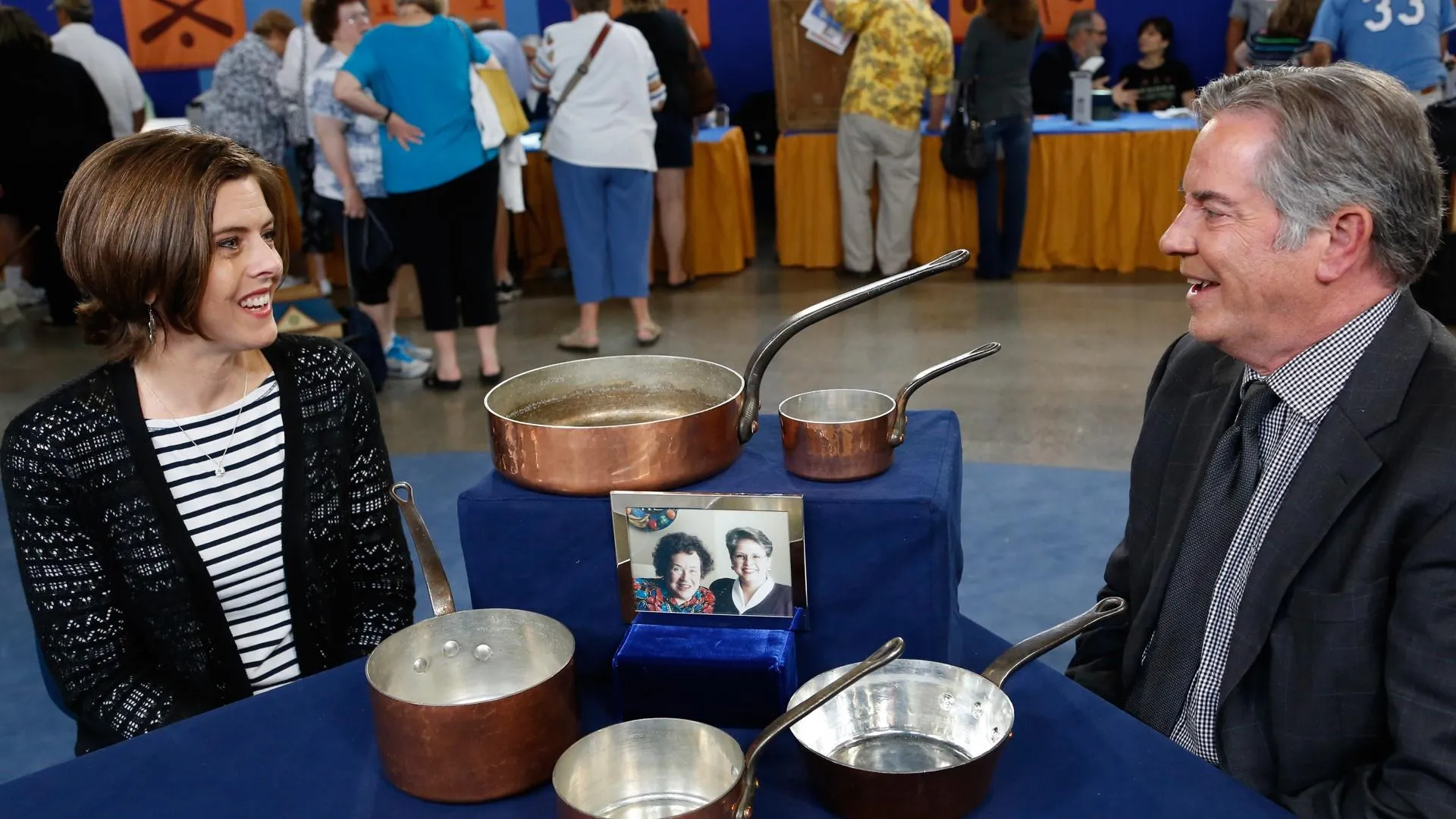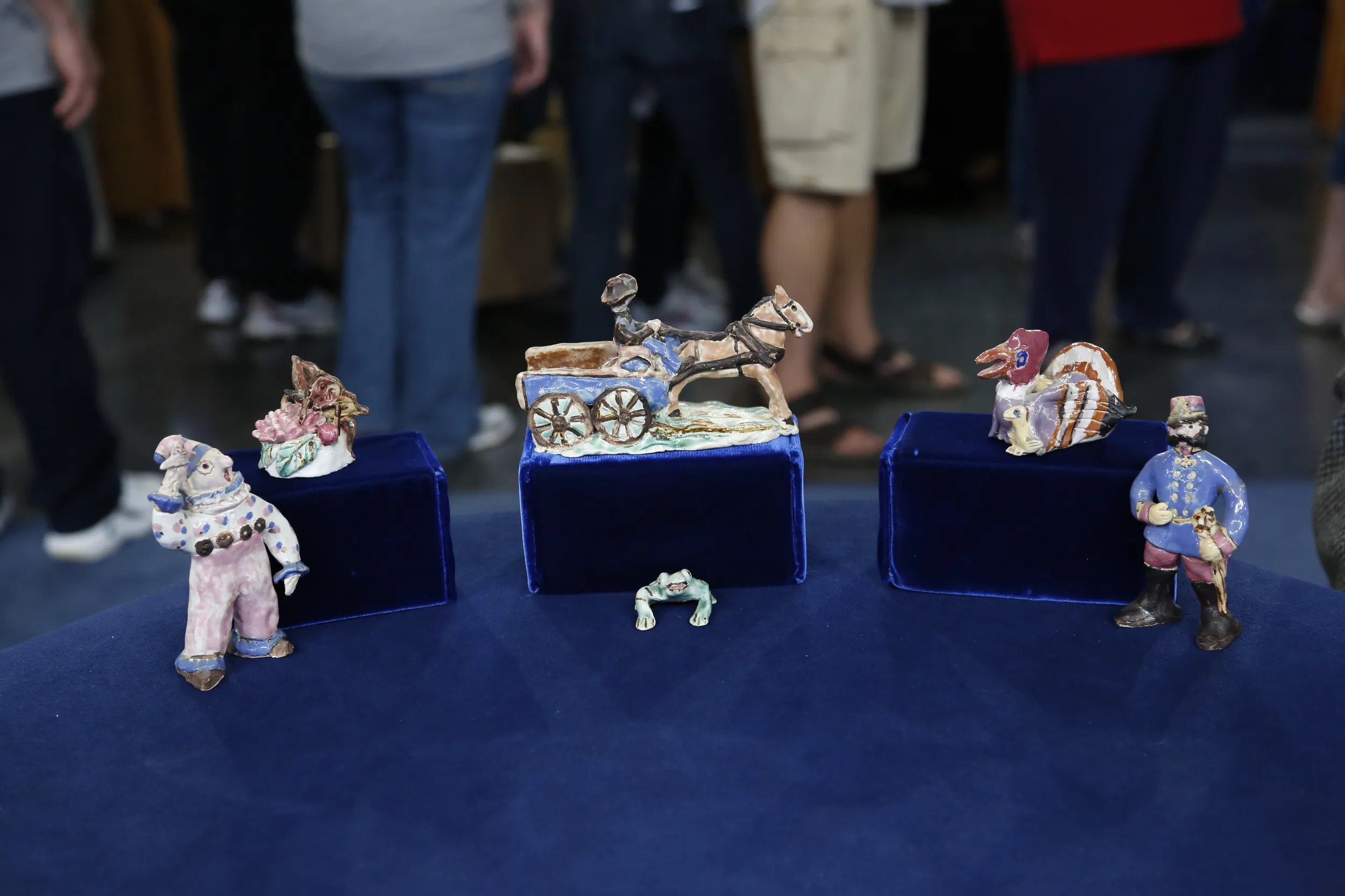GUEST: Well, these came through my grandmother, and then through my mother and then to me. And my grandmother was very much a supporter of the local arts, and she visited the Overbecks many, many, many times through the years and would take my mother to the Overbeck studio, and they told me that they took me too, although I was five years old when the last Overbeck sister passed away, so I really don't remember that.
APPRAISER: The last sister, Mary Francis, died in 1955. And she's the person who did most of these figural pieces. When your family went there, they actually had a couple pieces done as commissions, right?
GUEST: Right. This piece, for sure, represents my grandfather on the wagon.
APPRAISER: So that's your grandfather.
GUEST: Yeah, that's supposed to represent my grandfather. And we always were put in the wagon and hauled around the farm and up and down the road, and that's how we got around.
APPRAISER: Well, let me tell you a little bit about values on Overbeck pieces. A lot of the pieces that show up on a regular basis have actually gone down a little bit. And what collectors look for today are the more unusual pieces like your grandfather that's a commissioned piece and you actually know who the person is. You've got some of the more grotesque, more interesting, more historically significant pieces, starting with the clown over there closest to you who actually has a clown puppet on his hand. There's a cute butterfly on what looks like a rose bush. A little frog in front. My favorite piece is the turkey with her babes, and she's just really fantastic. And then we've got a gentleman, a soldier perhaps. Do you have any idea what your mother or grandmother would have paid for these pieces?
GUEST: Oh, my gosh. You know, that's something I've never asked them because my mother had this guy made for her when she was ten years old, she told me, so that would have been in the '30s. I really don't know what they paid for them.
APPRAISER: I've seen prices on some over the years of three dollars, two dollars, five dollars, ten dollars. So they probably weren't that expensive. Of course during the Depression, that was a lot of money. I think the best piece is your grandfather, and he's probably somewhere in the $900 to $1,200, maybe $1,500. The turkey, which I dearly love, $600 to $800. The butterfly, very fun, $400 to $600, $500 to $700. The little frog, $300 to $500. The soldier, probably $600 to $800 or maybe a little less because he does have a little damage. And the clown, I think maybe in the $800 to $1,000 range. So these are prices what they would sell for in an auction setting.
GUEST: That's fantastic.












